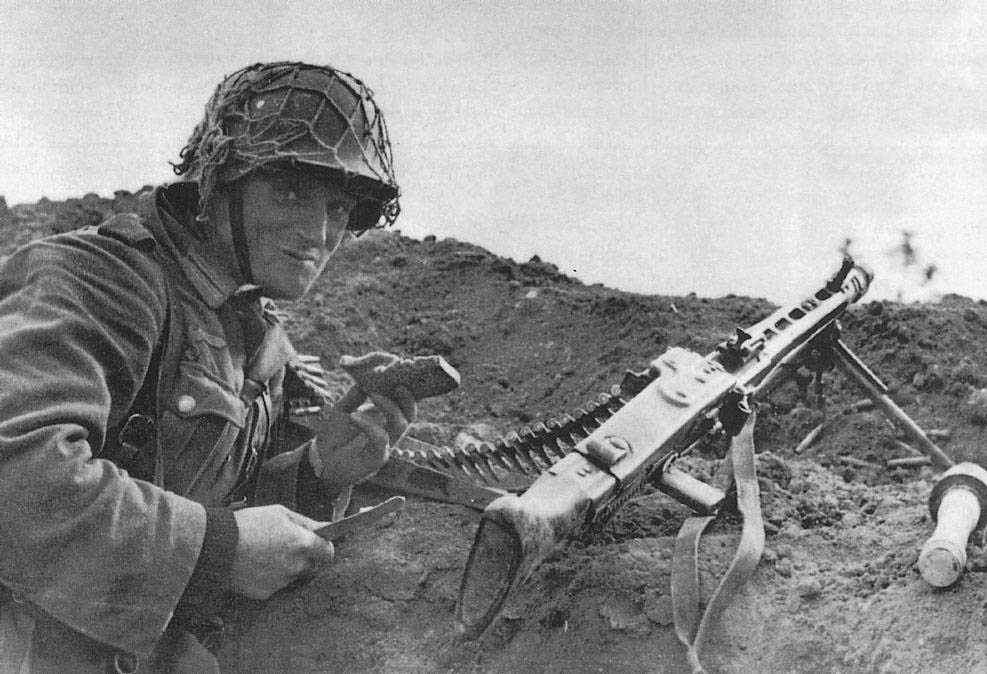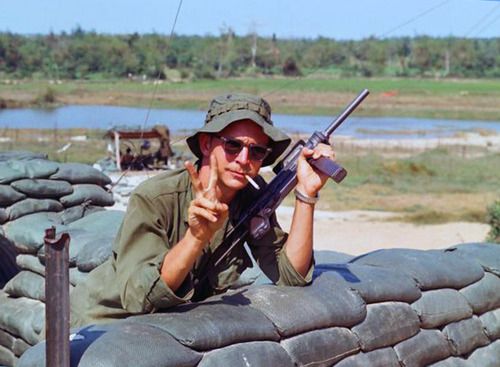
(German soldier with his trusty butter knife eating bread, Courtesy of Forgotten Weapons)
By Stepan Popov
When working with a large quantity of historic pieces it could be easy to overlook the importance of each item due to focusing on the work aspect e.g. cataloging. I found myself in said work-oriented headspace on multiple occasions during my internship. However, after watching the movie 1917 with my friends I had a resurgence of respect and understanding behind some of the history of the artefacts I work with. Of course, I always understood and appreciated the weight that stood behind all historic pieces but, I mainly focused on what the artefact could tell me at that exact moment of time. I often heard the words “if only it could talk” when someone was referencing an old item and while I also wished it could indeed talk, I knew that it could not. What made me reconsider my viewpoint was the character development in the movie 1917. Not much background and little personality was given to the characters, and while that could be attributed to the effects of war, I found it to be a good conduit for projecting personalities of people important to me onto said characters. This “projection” made the movie and the experiences that the characters went through more personal to me. It also made the personal connection and stories behind the items more valuable to me personally.
(Soviet BTR driver with personal stereo and Bruce Lee pictures, Courtesy of Afghan: The Soviet Experience)
Military items in specific are especially interesting to me as the owners of said items encountered non-typical daily situations when in combat. The items they had were kept on their person daily and saw much of what the soldiers themselves did. A coat or sweater a soldier would put on daily gave warmth during cold days, a helmet worn daily could have saved from a deadly piece of shrapnel or a nasty bump on the head from entering a bunker, a mess tin would give warm nourishment after a long march. Soldiers lived with their possessions for the duration of their service and during combat tours. Because said items were in such close proximity to the person’s life and sometimes death, it seems to me that a little part of the soldier is preserved in the items themselves. Truly understanding this concept brought a whole new level of respect towards artefacts for me. These old items are not just important because they represent a specific time period or event but also because they tell a story about a person’s life.

(US soldier in boonie hat enjoying a cigarette)
Most museums focus on the general topic at hand e.g. a military conflict or political event while displaying personal effects of an individual from the relevant time period. And while I understand that only so much information can be displayed and even less retained by a visitor in a museum, it feels wrong to leave out such a personal and relatable aspect of a person’s life. In the end, I am content with the idea that I gained a better understanding and more respect for items which I already value and find interesting. I hope that readers of this blog will also note the personal side of historic pieces.
